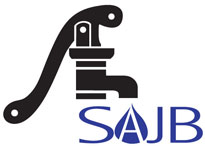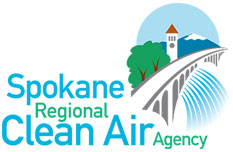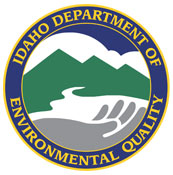Waste » Residential » Appliance » Water Softener with Salt
How do you soften water?
Typical home water softeners remove calcium and magnesium from hard water by exchanging their ions for sodium or potassium. Removing the minerals makes chores easier and can make your water appliances (washing machine, dishwasher, etc.) last longer.
The most common types of water softeners use an ion exchange process to remove magnesium and calcium that cause water hardness and to remove iron and manganese from drinking water. The softeners work by pumping water through a resin matrix. This matrix traps the magnesium and calcium ions that cause hard water and other naturally occurring ions by exchanging them with sodium or potassium ions. Over time, however, the efficiency of the matrix decreases as the sodium or potassium is exhausted.
To regenerate the treatment capability of the softener, the device is backwashed with a concentrated sodium or potassium chloride solution. The frequency of regeneration cycles and volume of backwash created depends on the hardness of the water, the amount of water used in the building, and the size of the water softener. Used properly, softeners regenerate one to three times per week and produce between 40 and 150 gallons of brine per week. If the water softener is set up incorrectly the amount of brine can be much higher. Water softeners are set to regenerate based on either flow measurements or by a timed interval. Flow regulated softeners generally produce less backwash brine than timer regulated systems.
The brine used for the regeneration process must be disposed of properly. It has traditionally been directed into the septic system, discharged underground into a drywell, or simply piped out of the building to the ground surface. Regardless of where it goes, the brine can potentially impact groundwater or surface water if not properly managed. Backwash brine contains excess chloride, sodium, and potassium ions from the regeneration salts as well as naturally occurring ions removed from the source water that may have been concentrated by the water softener. The high concentrations of chloride in the backwash is a particular concern. High levels of chloride in the groundwater used for drinking water can affect water taste and corrode pipes and fixtures. Chloride laden water discharged to the ground surface may damage vegetation.
Water softener backwash brine can also adversely affect the septic system. Brine disrupts the settling of solids in the septic tank and reduces the available volume for solids separation, potentially resulting in solids and grease entering the leachfield. This can lead to clogging and failure of the leachfield. There have also been reports in other parts of the country of leachfields being clogged by naturally occurring soil minerals reacting with the brine.
Soft water kills your plants.
If you use softened water on your house plants and your landscape, over time the salt will build up in the soil and cause your plants to die of thirst. If you live in an area that doesn’t get much rainfall, the salt will not get washed out or percolate deep enough into the soil to be diluted. High concentration of salt in soil decreases oxygen levels, causes the soil to swell and become compacted. When this happens, plants cannot get enough nutrients to their roots and they die.
Soft water poisons soil.
Two ways to tell if your plants, trees, and grass have salt stress is if they have yellow tips on their leaves or have salt rings where the water sits as it soaks into the soil. Yellow tips will be less obvious on grass because you cut off the tips every time you mow.
Soft water harms the environment.
Salt is washed into your city’s wastewater through normal activities like showers, using the toilet and washing clothes. So even if you don’t use softened water on your own landscape, your softened water ends up in your city’s water source and is likely used to irrigate parks and agriculture. The longer an area is watered with salt-treated water, the more the soil in that area gets compacted and loses vital nutrients. Over time the high salt concentration will not only kill existing plants but also prevent new plants from growing in the poisoned soil.
In cities where water softeners are allowed, the waste water must be treated for high salt content and there is an issue of where to discharge the salt when it comes out of the water. In places like California sometimes it’s discharged into the ocean which is expensive and can have long term effects on the aquatic environment. In other places, treated waste water is usually added to the local water source which may be a stream or lake and it will have the same detrimental effect on the fish and plants there.
Water softeners are water wasters.
Salt-based water softeners have some convenient benefits, sure, but they are sneaky water wasters. Advocates say you’ll save money on detergents and appliance replacements, but you will use more water with a water softener than without. Why?
First of all, because compacted soil does not absorb enough water and will runoff faster than porous soil. You will need to water more often to get the same result. Also, you have to leach the salt out of your soil to avoid killing all of your plants – and that means regularly flooding soil with enough water to push all of the salt down deeper to dilute it or flush it to the surface and away. (Again, it has to go somewhere. Your lawn may be safe but you may be involuntarily poisoning the park down the street.) While this method is effective at washing away the salt, it also washes essential nutrients out of the soil which you will have to replace with soil amendments.
Softened water isn’t recommended for drinking so many people purchase a reverse osmosis unit which wastes at least a gallon of water for every gallon it produces.
General Use Guidelines:
You can help reduce the amount of the brine discharge by choosing a water softener that has its regeneration cycle regulated by flow (demand initiated regeneration) rather than by a timer.
Reduce water use in the household.
Attach only the hot water line to the water softener.
Disposal Guidelines:
American Recycling and Pacific Recycling will pay for water softeners that are mostly metal as the metal can be can be recycled. All salt must be removed.
Plastic or resin water softeners with salt can be taken to the North County and Valley Transfer Stations or the Waste to Energy Facility. Regular dumping fees will be charged.
So What Can You Do? There are some excellent alternatives to using salt to soften water.
First, if you use a salt-based water softener and don’t want to change, connect the salt water softener to your hot water line only. This way you’ll have soft water for showers and washing clothes, but for all your cold water uses like watering plants and drinking you won’t have to worry about high sodium content. This also dramatically reduces the amount of salt water being washed away down your drains.
Promising technology for softening water without salt is the template assisted crystallization process. Four types of water softeners not using salt are: capacitive deionization, electrically induced precipitation, template assisted crystallization, and electromagnetic water treatment.










